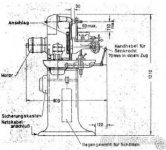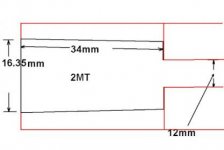Interested in this for folding knife making. Would love a bigger mill, but at the point, it is a small one or nothing.
Does anyone know anything about it, or if it won't be useful for knife making. Most of the work will be drilling and milling ballbearing pockets. Maybe some very minor facing.
Would greatly appreciate any input

Does anyone know anything about it, or if it won't be useful for knife making. Most of the work will be drilling and milling ballbearing pockets. Maybe some very minor facing.
Would greatly appreciate any input




